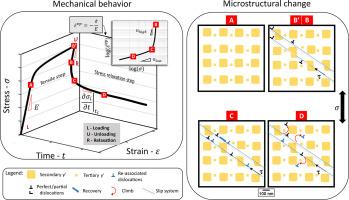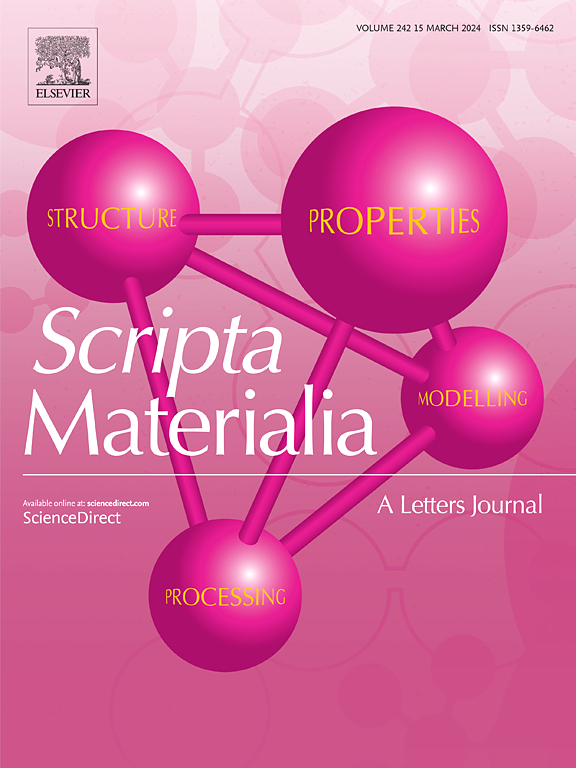Dislocation evolution and redistribution during stress relaxation in single crystal AD730TM after prior plastic strain at 700 °C
IF 5.6
2区 材料科学
Q2 MATERIALS SCIENCE, MULTIDISCIPLINARY
引用次数: 0
Abstract
Understanding dislocation evolution during viscoplastic deformation is essential to accurately predict high-temperature superalloy behavior. While creep and monotonic deformation are well studied, the evolution of the dislocation substructures during stress relaxation, particularly following prior plastic straining, remains unclear. This study investigates a single crystal γ/γ' AD730TM superalloy deformed at 700 °C, focusing on dislocation evolution and redistribution. Transmission electron microscopy reveals that stacking faults formed during plastic straining progressively disappear during relaxation, suggesting thermally activated mechanisms such as dislocation re-association and recovery. After re-association, perfect dislocations spread into the matrix, forming a homogeneous dislocation network. These microstructural evolutions are believed to underlie the macroscopic stress relaxation behavior, which exhibits two regimes in the Norton diagram: an initial high-stress exponent regime linked to rapid dislocation rearrangement, followed by a low-stress exponent regime associated with broader dislocation activity.

700℃预塑性应变后AD730TM单晶应力松弛过程中位错演化与重分布
了解粘塑性变形过程中位错的演变是准确预测高温合金行为的关键。虽然蠕变和单调变形已经得到了很好的研究,但在应力松弛期间,特别是在先前的塑性应变之后,位错亚结构的演变仍然不清楚。本研究对700℃变形的单晶γ/γ′AD730TM高温合金进行了研究,重点研究了位错的演化和再分布。透射电镜显示,在塑性应变过程中形成的层错在松弛过程中逐渐消失,提示了位错重缔合和恢复等热激活机制。再结合后,完美的位错扩散到基体中,形成均匀的位错网络。这些微观结构的演变被认为是宏观应力松弛行为的基础,在诺顿图中表现出两种状态:与快速位错重排相关的初始高应力指数状态,随后是与更广泛的位错活动相关的低应力指数状态。
本文章由计算机程序翻译,如有差异,请以英文原文为准。
求助全文
约1分钟内获得全文
求助全文
来源期刊

Scripta Materialia
工程技术-材料科学:综合
CiteScore
11.40
自引率
5.00%
发文量
581
审稿时长
34 days
期刊介绍:
Scripta Materialia is a LETTERS journal of Acta Materialia, providing a forum for the rapid publication of short communications on the relationship between the structure and the properties of inorganic materials. The emphasis is on originality rather than incremental research. Short reports on the development of materials with novel or substantially improved properties are also welcomed. Emphasis is on either the functional or mechanical behavior of metals, ceramics and semiconductors at all length scales.
 求助内容:
求助内容: 应助结果提醒方式:
应助结果提醒方式:


